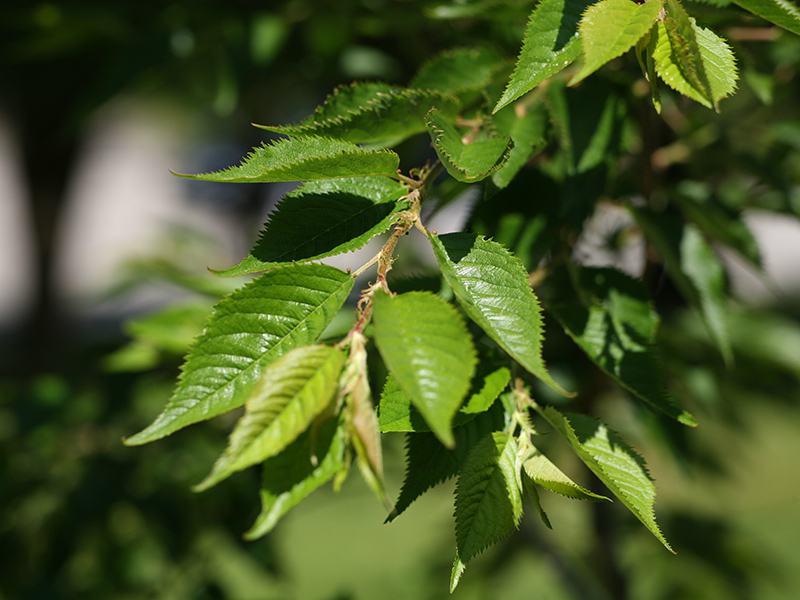

Source: Fast-Growing-Trees.com (SC)
Size shipped: 3-4', B&B
Planted:
First flowering: January 2020 or at the nursery
Having read that burlap won't decompose properly in a container, I tried to cut it away from the roots before potting this tree... and was promptly rewarded by losing a disturbing amount of the soil and probably the feeder roots as well. Not helping matters was the fact that I was using a potting soil far too heavy for a 7-gallon pot. As a result, this tree took FOREVER to get over the transplant shock, looking very unhappy for its first month or two with us, and all through 2019 it was always the first one to show yellow lower leaves from overwatering. Also not in Fast-Growing-Trees.com's favor was that the trunk was clearly not thick enough for the size of the crown.
In late August 2019, the cherry's chlorotic tendencies reached an alarming degree: I watered it one night when the leaves started drooping (it had been days since its last watering); the next day there were new yellowing lower leaves (not surprising), and the day after that, there were a whole bunch more (eek). Some leaves even turned dark brown, which is a new one on me. I suspected it was suffering from a nitrogen deficiency (possibly due to the Espoma slow-release organic fertilizer I'd mixed into the medium at potting finally running out?), and this analysis seemed to be validated when I sprinkled some Joyful Dirt organic fertilizer into the pot so that it could be fed by rainfall and not just by watering can -- the problems went away after that.
In its first winter with us, this cherry tree did in fact push some blossoms in January. I moved it into the garage whenever temperatures were about to go below freezing at night, just to make sure the roots don't suffer any damage in that pot.
Late winter 2020 saw some pruning to try to balance things out a bit and to encourage buds farther down the tree to activate. Due to the unusually warm winter, the buds actually started extending in mid-March, so it was on March 21 that I repotted the tree in a #7 RootPouch Boxer bag, including removing some of the old substrate and filling in the gaps with Fafard 52 (which I hadn't yet had when I potted it in April 2019) -- I would have done it earlier, but the RootPouches took a while to arrive (they shipped from the other side of the country). Thankfully, the root ball wasn't a potbound mess, though some roots on the bottom of the pot still needed detangling. But I probably should have used a jet from the hose to clear out all the old substrate.
In early July 2020, a few days after the cherry tree fell over in a storm, it suddenly started wilting all over for no apparent reason, and watering did not help -- it started getting the same old nitrogen-deficiency chlorosis on inner leaves, but unlike 2019, they stayed wilted at the same time. From what I've read, the symptoms seem consistent with root rot, for which the only possible cure would be to remove all the diseased roots and repot, but I'm not willing to go through that kind of trouble on a #7-size root ball of a plant that's been problematic ever since we got it. However, there are two possible morals I can learn from this: